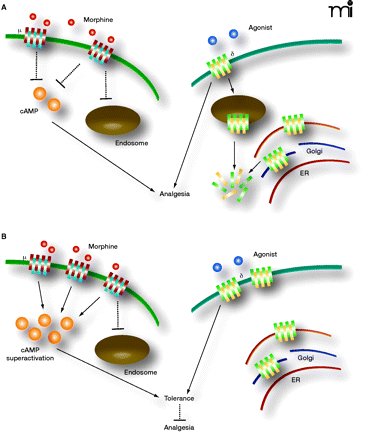
- Institution: Stanford Univ Med Ctr Lane Med Lib/Periodical Dept/Rm L109
- Sign In as Member / Individual
The Only Way Is Up: Preventing Opioid Tolerance by Promoting Cell Surface Expression of MOR-DOR Heterodimers?

Figure 1.
Schematic representation MOR- and DOR-mediated analgesia and tolerance. A. In the naïve state MOR agonists, such as morphine, inhibit cAMP formation and promote analgesia. Agonist activation of surface expressed DORs produces analgesia but many DORs are expressed intracellularly and are targeted for degradation. B. Prolonged activation of MORs causes cAMP superactivation, an early indicator of tolerance development, possibly as a consequence of the failure of MORs to undergo endocytosis and recycle. Chronic morphine also causes an upregulation of surface expressed DORs. At least some of these DORs are pro-nociceptive and contribute to morphine tolerance.


